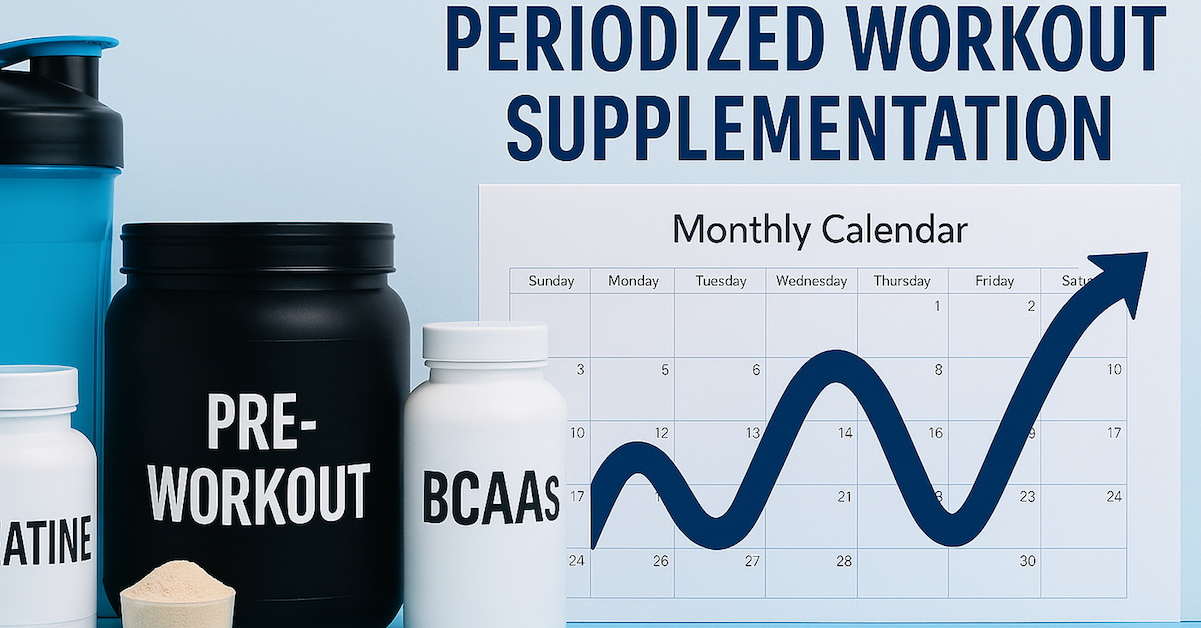Research shows that undulatory, or wave-like, periodization is highly effective. Alternating between periods of higher intensity (intensive phases) with periods of higher volume (extensive phases) will give you great results from your training.
Your nutrition should vary to accommodate these changing energy demands – fewer carbs during intensive phases and more carbs during extensive phases.
But what about supplements? Shouldn’t they vary as well?
You better believe it!
Wave-Like Supplementation
A great way to periodize your pre- and intra-workout supplements for maximum sensitivity and effectiveness is to use nootropics like alpha-glycerophosphocholine (alpha-GPC) and acetyl-L-carnitine (ALCAR), along with branched-chain amino acids (BCAAs) near the beginning stages of a routine. Then switch to caffeine and highly branched cyclic dextrin (HBCD) toward the latter stages.
If you change your routine monthly, simply alternate between those supplement combinations every two weeks to maintain sensitivity. They’ll work better for longer this way.
Periodize Pre-Workout Supplements
Nootropics are ideal when maximum concentration is necessary, particularly when starting a new routine. You don’t need as much physical energy at the beginning since loads are lighter. What you need is “mental energy” to concentrate on form. Get your technique right – don’t compromise that with stimulants.
Save stimulants for when you need a real kick. Bring them in on peak workouts toward the end of a routine when you’ll be using the greatest loads. That’s where caffeine enters the picture.
Not only will caffeine give you that kick when you need it most, but research from the University of Georgia shows it can reduce post-workout soreness by almost 50%. Using caffeine for only half your workouts each month helps maintain effectiveness while reducing negative side effects.
Periodize Intra-Workout Supplements
BCAAs are one of the best supplements to take during a workout. They offer numerous research-supported benefits, including stimulating anabolism, deterring catabolism, preventing mental fatigue, and providing energy, endurance, and improved recovery.
Along with their anabolic and anti-catabolic effects, BCAAs’ most valuable aspect is reducing post-workout soreness, especially at the beginning of a new routine. You may not appreciate this at the time, but you will afterward!
For maximal muscle mass gains, take a minimum of 20 grams of BCAAs during your workout – anything less won’t produce the desired effect. If budget is a concern, use them only for lagging body parts. Take BCAAs in evenly divided doses between sets.
Strength is one thing, energy is another. If you consistently find yourself exhausted early during workouts (common near the latter stages of a routine), try HBCD. Sip this between sets and you’ll be amazed at what it does for your stamina.
Periodize Post-Workout Supplements
When it comes to post-workout supplementation, creatine monohydrate reigns supreme. It’s the most researched sports nutrition supplement in the world, with nearly 400 studies on PubMed, about half dealing with muscle and exercise performance. The International Society of Sports Nutrition states that “creatine monohydrate is the most effective ergogenic nutritional supplement currently available to athletes for increasing high-intensity exercise capacity and lean body mass during training.”
Creatine should be cycled, and contrary to popular belief, doesn’t require a loading phase. Taking 5 grams of creatine monohydrate after every workout will saturate muscle cells within a month. The washout period is around four weeks before levels return to baseline. Therefore, cycling on creatine for one month during an extensive phase and cycling off during an intensive phase results in greater positive effects and fewer negative effects long-term.
Why take creatine after a workout, not before?
Many people experience cramping when using creatine. Proper hydration usually helps, but remember to always take creatine after your workout, never before. This not only helps prevent cramping, but according to Antonio & Ciccone (2013), “consuming creatine immediately post-workout is superior to pre-workout vis a vis body composition and strength.”
Why take creatine during an extensive phase, not an intensive phase?
As Dr. Tudor Bompa taught, creatine is excellent for muscle hypertrophy, but avoid it during power or maximal strength phases. By increasing the fluid volume of muscle cells, you decrease neural drive and thus decrease speed. In the steroid world, this is like the difference between methandrostenolone (Dianabol), which increases fluid retention, and stanozolol (Winstrol), which increases neural drive. Many sprinters favor Winstrol for this reason.
Post-workout during an intensive phase?
Take a page from strength coach Christian Thibaudeau and use a neural potentiation formula after your workout to increase central nervous system recovery. These supplements help restore key neurotransmitters like dopamine and acetylcholine that were depleted during the workout.
Bottom Line
Make sure to periodize your nutrition and supplementation as well as your training for maximum results.

How to Periodize Workout Supplements for Better Gains and Recovery
Research shows that undulatory, or wave-like, periodization is highly effective. Alternating between periods of higher intensity (intensive phases) and periods

Why the FDA’s Red Dye Ban Should Make You Rethink Your Vitamins
The U.S. Food and Drug Administration (FDA) recently announced a ban on red dye No. 3 in food and oral

Hydration Essentials for High-Protein, Low-Carb Diets: Fuel Your Body Right
When you’re exercising regularly on a high-protein, low-carb diet, hydration becomes even more crucial. Lower-carb diets mean you’re missing out
follow
Error: No feed with the ID 2 found.
Please go to the Instagram Feed settings page to create a feed.
